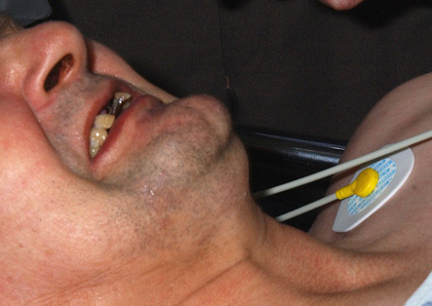Summary
Definition
History and exam
Key diagnostic factors
- lesão prévia propensa a tétano
- estado da imunização antitetânica
- trismo (mandíbula travada)
- dorsalgia
- rigidez/aumento do tônus muscular
- disfagia
- espasmos
Other diagnostic factors
- usuários de drogas injetáveis
- dificuldade respiratória
- pressão arterial, frequência de pulso e temperatura instáveis
- sudorese
Risk factors
- imunização antitetânica incompleta
- lesão
- práticas obstétricas assépticas
- usuários de drogas injetáveis
- injeção intramuscular sem assepsia
- cirurgia abdominal
- acupuntura, piercing de orelha, pedicuro, palitos de dente
- tumores necróticos
- infecção da orelha média
Diagnostic investigations
Investigations to consider
- diagnóstico clínico
- toxina sérica
- detecção do Clostridium tetani a partir do tecido da ferida ou swab
- anticorpos séricos antitoxina
- esporos em amostras de drogas ou objetos relacionados a esta prática
- punção lombar
- eletroencefalograma
- eletromiografia
Treatment algorithm
ferida limpa e pequena
ferida propensa a tétano
com tétano clínico
Contributors
Authors
Russell W. Steele, MD
Clinical Professor of Pediatrics
Tulane University School of Medicine
New Orleans
LA
Disclosures
RWS declares that he has no competing interests.
Acknowledgements
Dr Russell W. Steele would like to gratefully acknowledge Dr Christopher M. Parry, Dr Nicholas J. Beeching, Dr Lucy E. Cottle, and Professor Enitan D. Carrol, the previous contributors to this topic.
Peer reviewers
Louise Thwaites, BSc, MBBS, MD
Senior Clinical Research Fellow
Oxford University Clinical Research Unit
Hospital for Tropical Diseases
Ho Chi Minh City
Vietnam
Centre for Tropical Medicine and Global Health
Oxford University
Oxford, UK
Disclosures
LT is an author of a number of references cited in this topic.
Katrina Kretsinger, MD, MA
Commander
U.S. Public Health Service
Medical Epidemiologist
HIV Vaccine Team
Epidemiology Branch
Division of HIV/AIDS Prevention
National Center for HIV/AIDS, Viral Hepatitis, STD, and TB Prevention
Centers for Disease Control and Prevention
Atlanta, GA
Disclosures
KK declares that she has no competing interests.
References
Key articles
UK Health Security Agency. Tetanus: the green book, chapter 30. Jun 2022 [internet publication].Full text
Centers for Disease Control and Prevention. Child and adolescent immunization schedule by age: recommendations for ages 18 years or younger, United States, 2025. Nov 2024 [internet publication].Full text
Centers for Disease Control and Prevention. Adult immunization schedule by age: recommendations for ages 19 years or older, United States, 2025. Nov 2024 [internet publication].Full text
Havers FP, Moro PL, Hunter P, et al. Use of tetanus toxoid, reduced diphtheria toxoid, and acellular pertussis vaccines: updated recommendations of the Advisory Committee on Immunization Practices - United States, 2019. MMWR Morb Mortal Wkly Rep. 2020 Jan 24;69(3):77-83.Full text Abstract
Tiwari TSP, Moro PL, Acosta AM. Tetanus. In: Hall E, Wodi AP, Hamborsky J, et al, eds. Centers for Disease Control and Prevention. Epidemiology and vaccine-preventable diseases. 14th ed. Washington, D.C.: Public Health Foundation; 2021.Full text
Reference articles
A full list of sources referenced in this topic is available to users with access to all of BMJ Best Practice.

Differentials
- Distonias induzidas por medicamentos, por exemplo, fenotiazinas
- Intoxicação por estricnina
- Síndrome neuroléptica maligna
More DifferentialsGuidelines
- Child and adolescent immunization schedule by age: recommendations for ages 18 years or younger, United States, 2025
- Adult immunization schedule by age: recommendations for ages 19 years or older, United States, 2025
More GuidelinesPatient information
Vacina DTP (difteria, tétano, poliomielite)
Vacina DTPa (difteria, tétano, poliomielite e coqueluche)
More Patient informationLog in or subscribe to access all of BMJ Best Practice
Use of this content is subject to our disclaimer